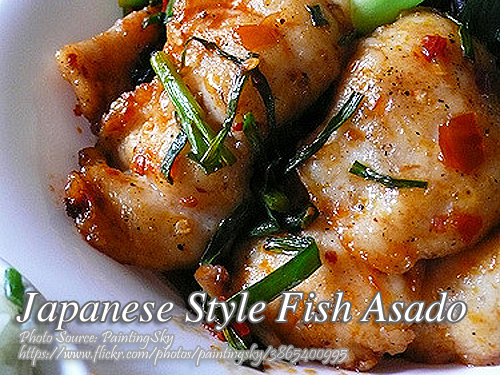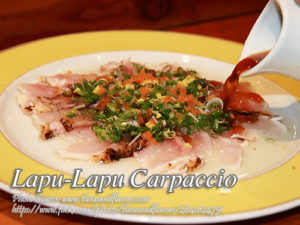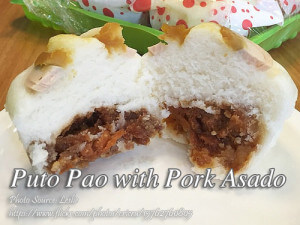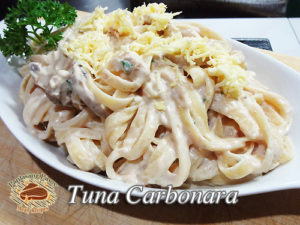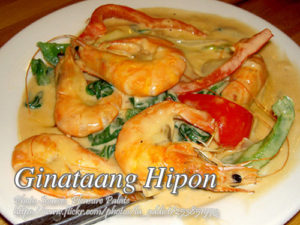This fish asado recipe is a simple yet delicious dish that you can cook anytime or any day. There are no special ingredients needed and all of them are readily available in your favorite supermarket or wet market. Fish fillet can also be bought frozen in vacuum plastic packs and the most common is the cream dory. Labahita or surgeon fish are not always available and it is more expensive. But you can always substitute it with a cheaper and easy to find meaty fish.
Japanese Style Fish Asado: The Best Family Recipe Ever
Every time I rummage through the history of our family in the kitchen, a mouthwatering memory just keeps popping up: our love for simple and savory dishes such as Japanese style fish asado that my Tita Lily would lovingly prepare almost every Sunday. This recipe totally takes me back to those days when we’d all gather around the table each with eager plates and happy hearts. It’s become a staple in our home, and may just do the same with yours.
I learned this dish from my Tita. It was taught to her by a Japanese neighbor who settled in our town of Tanza, Cavite, after World War II. There is really this flavor created by the fusion of Filipino and Japanese influences in this recipe. Every time I cook this, it’s like a bridge to the past—a reminder of how food and culture can blend so beautifully on our plates.
A Simple Dish with Big Flavors
The beauty of the dish lies in its simplicity. You don’t need to have any exotic or hard-to-find ingredients. In fact, everything you need is probably already sitting in your pantry or a short trip to the supermarket away. Cream dory happens to be my go-to for this recipe because it’s affordable and has this pretty mild, meaty texture that goes well with the sauce. But if you can get your hands on labahita, or surgeonfish, it is not such a bad splurge. This one holds up beautifully when fried and isn’t as soft as other fish species. I recall brother Jaime insisting on labahita whenever he arrived home from Manila. He said this reminded him of the markets near Quiapo.
To cook, you prep by cutting the fish into fillets, about an inch each. I always cut fillets small enough to fry evenly and soak up the rich sauce. Quick coating with minced garlic and cornstarch encases the fish with a crunchy golden exterior upon frying. Butter, not oil, was essential here-my Lola Fely swore by this. She added that butter is also added not only to enrich the dish but also to liberate the umami from the soy sauce and the Worcestershire sauce that gets added later.
The Sauce That Saves the Dish
Speaking of sauce, this is where the magic really happens. When the fish is golden brown, you pour in a mixture of soy sauce, Worcestershire sauce, a pinch of black pepper, and a little bit of MSG. I know, I know–MSG has gotten a bad rap over the years, but trust me, my uncle Manny swears by it. He’s retired out of the cruise ship, and he says it’s the secret to that irresistible, savory taste. The combination of these ingredients creates bold, salty, slightly tangy cling sauce on every piece of fish.
Once that sauce is in the pan, stir in some onions, and just let everything simmer. The onions go soft, release the sweetness into the sauce, while the fish absorbs all those bold flavors. And then after five minutes, add a bit of water to adjust the consistency. You want the sauce to coat the back of a spoon but be not too thick, still having richness to it, similar to a thick adobo sauce but with a tangy Japanese twist.
Peppers and Leeks as the Final Touch
I’m always adding thin slices of bell pepper and a handful of leeks at the very end. My cousin Mario, who is also a bit of a foodie himself, once told me that these veggie others are not really meant as a garnish only. The bell peppers add a nice crunch and a nice pop of color to the dish, while the leeks bring a mild onion-like flavor that cuts through the richness of the dish. My Nanay would always say that no dish can ever be complete without a bit of texture, and that’s what really makes this dish come together at the end.
A Traditionalist Dish
Japanese style fish asado isn’t exactly a dish known to many people, to say the least, but one that holds a special place in our hearts. The dish is at one time and another familiar and foreign. It intermingles ordinary Filipino ingredients with Japanese techniques of cooking. Starting from the frying of the fish in butter, starting with the use of soy sauce, and then its simplicity to the recipe, the influence is almost Japanese, but then came the peppers, and then the balance of flavors makes it unmistakably Filipino.
It’s comforting to cook this dish today, knowing that it is generations old. It’s more than a meal; it’s a piece of family history. Each time I make it, the stories of the elderly come flooding back with Sunday lunches filled with butter at sizzle-in-the-pan aromas and just how much food can connect you with the people and places you love.
A Meal to Share
Do not feel intimidated if you are new to cooking. This Japanese style fish asado recipe is very forgiving and flexible. Use whatever fish you can get your hands on, as long as it’s firm, adjust the seasoning to your liking, and even add more vegetables if you feel adventurous. The secret ingredient is love, as with most of my family’s food.
Next time you feel that something savory but not complex would be great to have, give this a try. Serve it on fluffy steaming hot rice, gather around the table of your loved one, and let the flavors remind you of the beauty that this simple tradition could bring and how it speaks of togetherness. You might find that even this simple recipe can speak deep in your family’s story.
How to Cook Japanese Style Fish Asado
Ingredients
- 1/2 kilo fish fillet labahita or any meaty fish
- 2 Tbsp. cornstarch
- 1 pc large onion quartered
- 5 cloves garlic minced
- 3-4 stalks leaks or spring onion cut into 1 1/2" long
- 1 pc red bell pepper cut into strips
- 2 Tbsp. soy sauce
- 1 Tbsp. Worcestershire sauce
- 1/2 tsp. ground pepper
- 1 tsp. MSG
- 2 Tbsp. margarine
- 1/2 cup water
Instructions
How to cook Japanese Style Fish Asado:
- Cut fish into 1" square fillets. Add minced garlic and cornstarch.
- Fry in butter until golden brown. Then pour in soy sauce, Worcestershire sauce and season with pepper and MSG.
- Stir in onion. After 5 minutes, add water and stir until sauce thickens.
- Lastly, add pepper strips and leek. Serve hot.
Notes
Cooking Tips:
Fresh Fish Give the Best Flavor
While frozen fish fillets would do, the whole dish would taste and feel much better if made with fresh fish. Fresh fish is quite firmer and could handle deep frying relatively better and add more mouthfeel texture in the sauce. Use cream dory or any labahita-type meaty fish for best results.Fry it in Butter for That Richer Taste
Butter greases the fish rich and deep, a flavor that oil alone can only try to strive for. When frying, ensure the butter used gets to the right heat so that when it fries the fish, this leaves the outside golden, crispy without burning it; also, the sauce sticks to every piece of fish better.Don't Overcook the Vegetables
Add the peppers and leeks at the end so they retain a bit of crunch and their bright colors. If the vegetables cook too long, they become mushy and lose something of their appealing color to the balance of flavors of the dish. Slightly crisp offers a fresh contrast to the rich sauce and tender fish.
